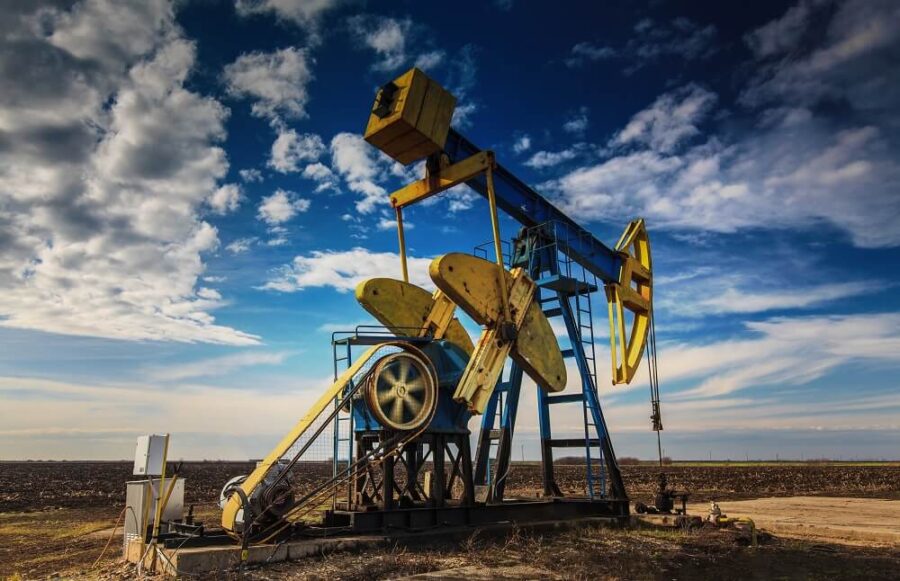
Shale Oil and Gas – An Explanation of Fracking

The term hydraulic fracturing, more commonly known as fracking, is one of the various methods used by today’s gas and oil industry to extract valuable energy resources. The use of fracking has proven to be an effective method for extracting geothermal energy, natural gas, oil, and water from deep under the earth’s surface. It is a process that has been safely utilized in the United States for more than 70 years now.
During the timeframe that fracking started in the United States, we’ve created more than 1.7 million wells. This has resulted in more than seven billion oil barrels and natural gas, equal to around 600 trillion cubic feet. With these points in mind, our pipe flange experts here at Forged Components are ready to tell you more about fracking and shale oil and gas.
Today’s Uses for Gas and Oil
The list of things used for oil and gas is truly extensive. Some 93% of the fuel used for transportation is produced from oil. Around 1/3 of the electricity in the United States is currently generated by using natural gas. With these points in mind, it is now time to take a more in-depth look at these two products.
- Natural Gas – In 2012 alone, the U.S. consumed natural gas around 25 trillion cubic feet. Power plants utilize more than 35% of this natural gas to generate electricity. More than 25% heated homes and other properties. The rest of the natural gas during that year was used in various industrial applications.
- Oil– Currently, the United States consumes some 15 million crude oil barrels each day. Around 87% of this crude oil fuels motor vehicles and airplanes. Other refined oil products are used for the purposes of home heating. The remainder is used across a wide range of industries and for a large number of different applications. These include the creation of paints, chemicals, asphalt, greases, and plastics.
What Is Meant By the Terms Fracking and Shale Gas?
There are a few key points that are valuable to understand when it comes to fracking and shale gas. They include:
Shale gas is a form of natural gas trapped in rock formations deep under the earth’s surface.
Fracking extracts shale gas – water, chemicals, and sand are pumped into the rocks to facilitate the process.
The fracking process consists of the long horizontal wells drilled into shale rock formations that lie more than a kilometer below the earth’s surface. Large quantities of water, sand, and chemicals are pumped into these wells at high pressure to open up fissures. The sand holds these open, allowing the escape of the trapped gas. Those who advocate for fracking point out that making use of these vast deposits can help to ensure that energy is affordable.
The Significance of Shale Gas
Shale gas is a resource of significant importance. Experts in the United States expect this resource to represent up to half of the natural gas production by 2035. Many believe that the reserves of this resource are extensive though industry experts disagree on the full extent. It is also worth noting that the extraction process is likely to be much slower in densely populated regions such as Europe.
Fracking and How It Works
There are six primary steps involved in fracking. They include:
- The wellbore is drilled to extract gas or oil from shale rock.
- When the drill reaches the shale layer, it starts to move horizontally for a mile or more.
- Explosive charges are lowered to the well’s bottom, puncturing small holes in the horizontal section deep in the shale layer.
- A mix of water, sand, and chemicals are introduced into the well at very high pressure to go through the holes in the casing. When the fluids crack the shale, the sand holds the cracks open. The chemicals assist in the process of gas seeping out.
- The chemicals and water flow back from the well and are removed.
- Natural gas starts to flow up out of the well.
Contact Our Sales Department for Wellhead Components
As the leading manufacturer of various forged wellhead components for onshore and subsea applications, our team at Forged Components is always ready to provide you
with a quote that meets your requirements. Please contact our sales team at (281) 441-4088 or submit your quote request online. We look forward to providing you with a timely response to your inquiries.
